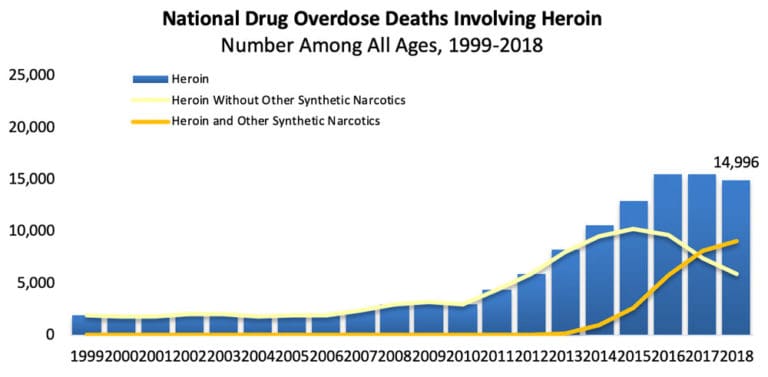The term ‘pink clouding’ may sound enticing, but it can be a major cause for concern for those in the early stages of recovery. This phenomenon can provide a period of intense euphoria and positive feelings. However, these feelings can put a rose-colored filter on the recovery journey, leading to an increased risk of relapse. Understanding how to navigate the euphoria and prevent relapse when experiencing pink clouding is essential for those in recovery.
In this article, we will cover what pink cloud syndrome is, how pink clouding affects the recovery process, and preventing relapse.

What is Pink Cloud Syndrome?
Pink Cloud Syndrome is a phenomenon that many people in recovery experience at the beginning of their journey. This phenomenon is also referred to as the ‘honeymoon phase’ of addiction recovery because of the heightened feeling of euphoria. While this may sound like the best thing to happen for someone in recovery, Pink Cloud Syndrome can set someone up for failure or relapse.
The term then became popular in treatment centers in the 90s as a way to describe the euphoric feeling and new outlook on life that someone experiences in early addiction treatment.
Signs of Pink Cloud Syndrome
The signs that someone is experiencing pink cloud syndrome begin in early recovery. Pink clouding can lead someone to become complacent in their recovery and, ultimately, fail in their sobriety. To avoid this from happening, it’s crucial to know the signs of pink clouding, but be aware that these can vary from person to person. Here are some of the most common signs that someone might be pink clouding:
- Overconfidence
- Extreme joy and euphoria
- Unrealistic expectations
- Extreme optimism towards recovery or life in general
- Increased emotional awareness
How Long Does Pink Clouding Last?
Pink clouding can begin as early as a few days, a few weeks, or a few months, depending on the individual and how severe the condition is. Similarly, the effects of pink clouding can stick around for a varying amount of time.
Pink Clouding in Recovery
During the pink cloud phase, individuals in recovery may feel a renewed sense of purpose and hope and may believe that their addiction is a thing of the past. This phase may occur at any point during the recovery journey. However, it is most commonly experienced in the early stages of recovery when individuals are still adjusting to life without drugs or alcohol.
While pink clouding can be a positive experience, it is important to recognize that it can also be problematic if not managed properly. The intense positivity and confidence associated with it can cause individuals to become complacent and overconfident, leading them to underestimate the challenges that may arise during the recovery process.

Benefits of Pink Clouding
While pink clouding is not experienced by everyone who goes through addiction recovery, it can have some benefits for those who do experience it. However, it is important to note that the benefits of Pink Cloud Syndrome are temporary and do not guarantee long-term recovery. Some of the common benefits of pink clouding are:
- Increased motivation
- Greater sense of hope
- Improved relationships
- Changed perspective on life
The Risk of Relapse
According to the National Survey on Drug Use and Health, 46.3 million people reported having a substance use disorder in 2021. Of those, 20.9 million considered themselves to be in recovery. However, studies have shown that substance use disorder relapse rates are estimated to be between 40% and 60%. It is crucial to recognize that the period during or immediately following the pink cloud phase poses the most significant risk of relapse.
Being in the pink cloud may lead an individual to think that they have their recovery under control and that they do not need treatment. This can lead to them not learning coping skills or setting manageable goals for their recovery. Not having the proper mindset or skills to properly manage cravings, social pressure, or triggering environments can lead to relapse.
Preventing Pink Clouding
Preventing pink clouding in addiction recovery can be challenging, as it is a natural and often unavoidable phase of recovery that many people experience. However, there are several strategies that individuals in recovery can use to minimize the risks associated with this phenomenon and stay focused on long-term sobriety. Some of the most common strategies that can be used are:
- Recognizing the potential risks of pink clouding
- Staying committed to the recovery process
- Addressing and staying aware of any underlying issues
- Maintaining a clear state of mind to remain grounded
- Seeking out support through loved ones or support groups

Contact Asheville Recovery Center for Addiction Treatment
Addiction recovery is a challenging and complex process, and pink cloud syndrome is only one part of it. Understanding the impact of pink clouding on your addiction is essential to receiving proper treatment and reaching life-long sobriety.
At Asheville Recovery Center, we are dedicated to providing you with the resources and support during your journey to tackle any problem that comes your way. If you are experiencing pink cloud syndrome, our team of highly-skilled medical professionals will work through the symptoms with you together. We provide holistic, comprehensive, and individualized treatment programs to address your unique needs.
If you or a loved one are struggling with substance abuse, mental health conditions, or addiction, contact us today to learn more about our addiction treatment programs. We aim to ensure everyone succeeds in their journey while knowing we are with them every step of the way.





